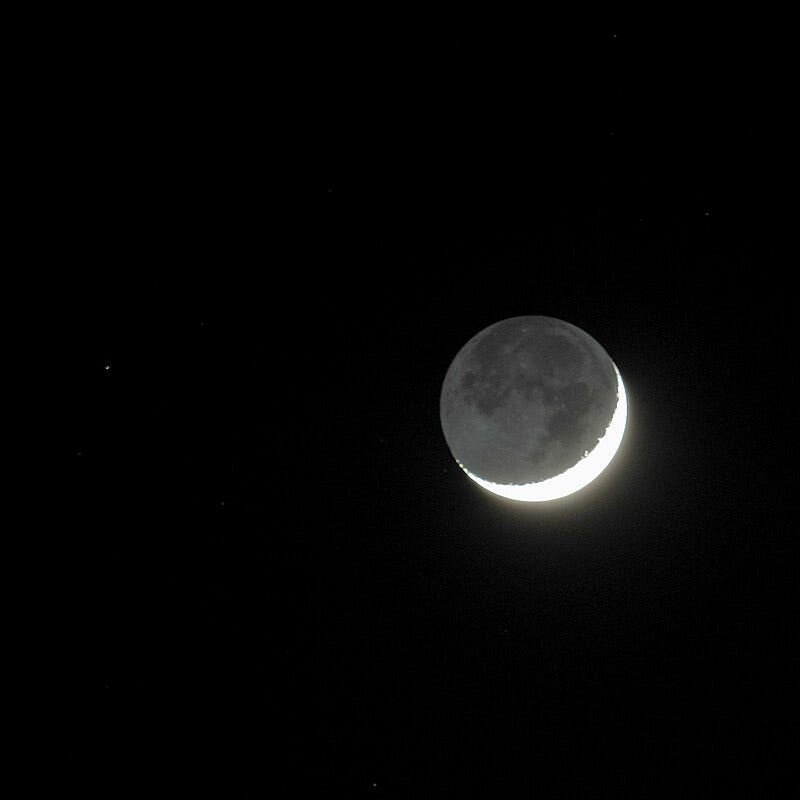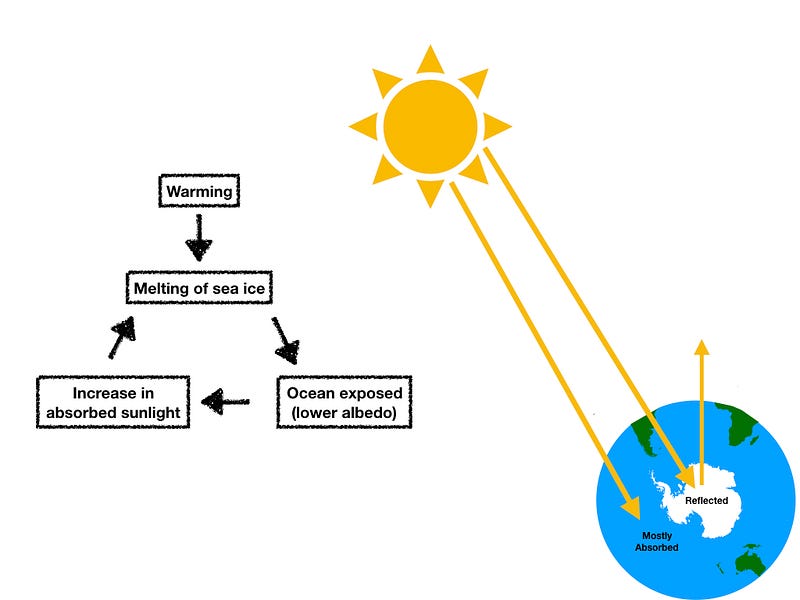The Enigmatic Charm of Earth's Glow: Understanding Earthshine
Written on
Chapter 1: The Allure of Earthshine
Have you ever gazed at the night sky and marveled at the crescent Moon, noticing the faint illumination on its darker side? This mesmerizing glow is a result of Earthshine, a phenomenon where sunlight reflects off Earth’s surface and illuminates the Moon. Approximately thirty percent of the sunlight that hits Earth is redirected into space, with some of it bouncing onto the lunar surface, creating a subtle glow. This faint light appears dim due to the double reflection process, yet it remains a remarkable sight.
As Shakespeare aptly put it, “The moon’s an arrant thief, And her pale fire she snatches from the sun.” This phenomenon is also referred to as the ashen glow or Da Vinci glow, named after the Renaissance thinker Leonardo Da Vinci, who explored this effect in the fifteenth century, long before the heliocentric model of the solar system was established.

Section 1.1: Optimal Viewing Conditions for Earthshine
Earthshine can typically be observed a few days before and after a new Moon, particularly during the waxing and waning crescent phases. When the Moon is aligned between Earth and the Sun, it is unable to reflect sunlight, becoming almost completely dark. However, during the days surrounding this alignment, the Moon begins to catch a glimpse of sunlight, allowing us to witness its subtle glow.
The prime times for observing earthshine are just before dawn and shortly after dusk. Scientists have noted that this effect is often more pronounced during late winter and early spring, specifically in April and May.
Subsection 1.1.1: Understanding Earth’s Albedo

Earthshine is intrinsically linked to Earth’s albedo, which measures the reflectivity of sunlight by a celestial body. Earth reflects about thirty percent of sunlight back into space, whereas the Moon reflects only twelve percent. This albedo scale ranges from 0 to 1, with 0 representing no reflection and 1 indicating total reflection. Consequently, if we were to observe Earth from the Moon, it would appear significantly brighter than the Moon does from Earth, due to its higher albedo.
The reflectivity varies based on the geographical features facing the Moon, including oceans, ice caps, clouds, and vegetation. Notably, the icy surfaces of Enceladus, one of Saturn's moons, boast an impressive albedo of 0.99, making it the most reflective body in our solar system.
Chapter 2: Measuring Earthshine's Impact
The video titled "Da Vinci Glow": Know the rare phenomenon that will cast an eerie glow over the moon | Oneindia News, delves into the science behind this fascinating effect, shedding light on its significance in our understanding of celestial phenomena.
The luminosity of earthshine was first quantitatively assessed by French astronomer André-Louis Danjon in the 1920s. He developed a “cats-eye photometer” for his observations. Later, in the 1970s, Steven E. Koonin at New York University improved upon Danjon's methodology, emphasizing the importance of earthshine observations for climate studies. Koonin noted:
“Studies of climate change require well-calibrated, long-term measurements of large regions of the globe. Earthshine observations are ideally suited to this, because, in contrast to satellite determinations of the albedo, they are self-calibrating, easily and inexpensively performed from the ground, and instantaneously cover a significant fraction of the globe.”
Data collection occurs at the Big Bear Solar Observatory in California, utilizing a 6-inch refractor telescope and sophisticated devices for precision measurements. The optimal period for capturing data is one week before and after the new Moon.
Earthshine is currently diminishing, with studies from the Big Bear Solar Observatory revealing a reduction of about 0.5% from 1998 to 2017. Interestingly, there has been no corresponding decline in solar glare, indicating that this dimming is solely due to changes in Earth's reflectivity.
Philip R. Goode, director of the observatory, highlights the relationship between sunlight absorption and climate:
“Earth’s climate is driven by the net sunlight that it absorbs.”
The Clouds and Earth’s Radiant Energy System (CERES) project by NASA shows that cloud cover over the eastern Pacific is decreasing, which could have significant implications for global warming. If this decline in reflectivity continues, it may lead to severe climate disruptions.
The second video, "Rush ~ Earthshine ~ R30 Tour ~ [HD 1080p] ~ 9/24/2004 at the Festhalle Frankfurt, Germany," showcases how Earthshine has captivated audiences through its beauty and scientific intrigue.
The quest for extraterrestrial life is another fascinating aspect linked to Earthshine. Astronomers studying exoplanets are particularly interested in how changes in planet shine and light polarization may indicate the presence of life elsewhere in the universe. By utilizing spectropolarimetry to analyze Earthshine, researchers can identify biosignatures present in the reflected light from Earth.
Michael Sterzik, deputy director of the European Southern Observatory, states:
“We believe that precise usage of these spectropolarimetric techniques has promise for exoplanets. It’s currently being applied to giant exoplanets, not because we expect to find life, but just to inspect the atmospheres.”
Thank you for engaging with this exploration of Earthshine. If you have any insights or feedback, please share your thoughts in the comments. Until next time, may your journey be filled with discovery and joy. If you appreciate this content, consider showing your support!